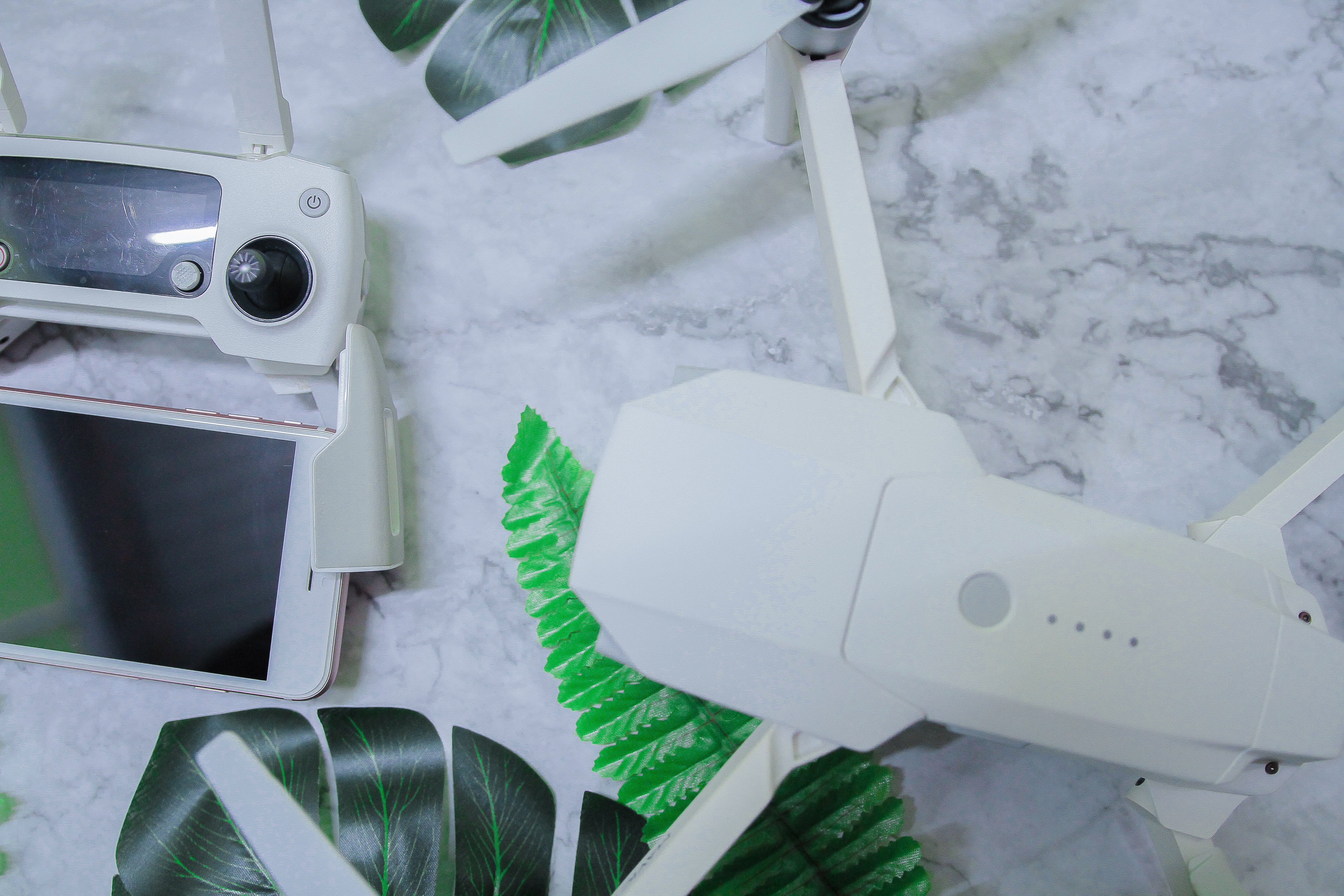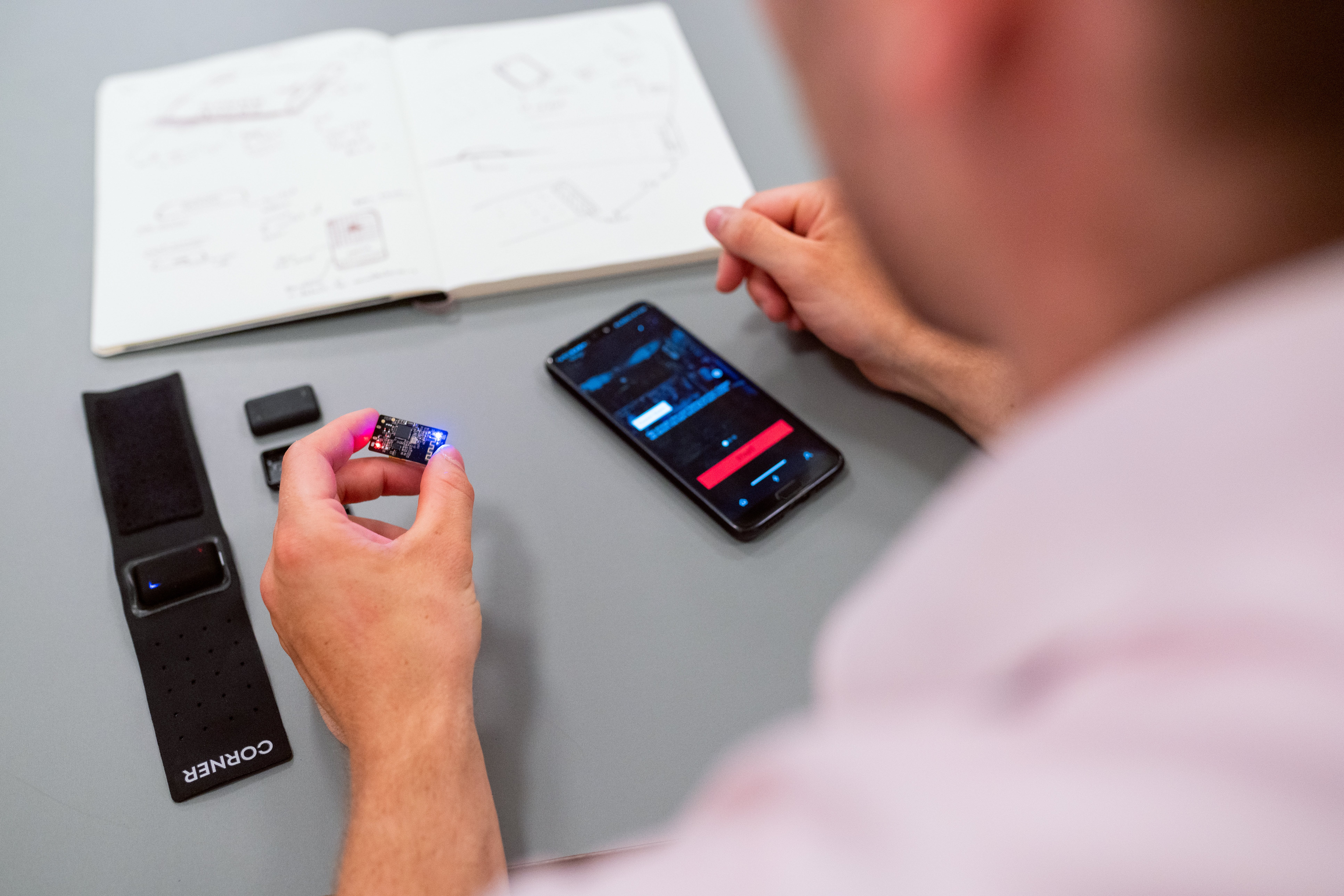Free ESP32 IoT App Development with ESP-IDF: Download Now!

The Internet of Things (IoT) has revolutionized the way we interact with the world around us, allowing seamless communication between devices and enabling smart environments. At the heart of this revolution is the ESP32 chip, a powerhouse for IoT application development that offers WiFi, Bluetooth, and a plethora of GPIO pins. To harness the full potential of this chip, developers turn to the ESP-IDF (Espressif IoT Development Framework), which is a robust platform for building high-performance and low-power IoT applications.
ESP-IDF is an official development framework for the ESP32 and ESP32-S Series SoCs, providing a wealth of libraries and tools to create sophisticated IoT solutions. It is designed to be scalable and adaptable, catering to a wide range of IoT applications ranging from home automation to industrial control systems. The best part? It’s available for free download, making it accessible for hobbyists, students, and professionals alike.
For those eager to start their journey into IoT application development with the ESP32 using the ESP-IDF, a wealth of resources and a supportive community await. Begin your IoT project today by visiting Biz4Solutions, where we provide the expertise and guidance needed to transform your ideas into reality. With a focus on innovation and quality, our team is ready to assist you in developing cutting-edge applications that leverage the power of the ESP32.
Understanding the ESP32: A Game-Changer for IoT

Delving into the capabilities of the ESP32, it’s clear why this microcontroller has become a game-changer in the IoT space. This sophisticated System on a Chip (SoC) integrates not only a powerful dual-core processor but also offers a rich set of features that cater to a variety of IoT applications. Its built-in WiFi and Bluetooth functionalities mean that connectivity is at the forefront, allowing devices to communicate with the internet and other devices with ease.
The ESP32’s versatility is further exemplified by its array of input/output (I/O) ports, which support a wide range of sensors and actuators. This makes it an excellent choice for developers looking to build complex IoT systems that require multiple forms of interaction with the physical world. Additionally, the ESP32’s low power consumption and sleep modes ensure that even battery-powered applications can run efficiently, which is critical for many IoT devices.
What sets the ESP32 apart is its balance of power and cost-effectiveness. It provides high-end capabilities like hardware acceleration for cryptographic operations, secure boot, and flash encryption, ensuring that IoT applications are not only powerful but also secure. With its robust design and capacity to handle multitasking, the ESP32 is well-suited for applications that demand reliability and performance, such as smart home devices, wearable technology, and industrial automation systems.
Getting Started with ESP-IDF: Your Free Download Guide
.jpg)
For those eager to embark on IoT application development with the ESP32, the Espressif IoT Development Framework (ESP-IDF) is the official software development kit that provides a wealth of resources and tools. To get started, developers can access the ESP-IDF free download through the Espressif Systems website or GitHub repository. This comprehensive guide walks you through the initial steps of setting up the development environment on your system, whether you’re using Windows, macOS, or Linux.
Once the download and installation are complete, developers will find an array of sample projects and tutorials designed to familiarize them with the capabilities of the ESP32. The ESP-IDF framework is structured to help both novice and experienced developers in creating applications that are optimized for performance and stability. It also includes a detailed API reference to assist developers in harnessing the full potential of the ESP32’s hardware features.
The ESP-IDF comes with a powerful command-line tool called idf.py, which simplifies tasks such as building projects, flashing firmware to the device, and monitoring its output. Moreover, ESP-IDF seamlessly integrates with advanced tools like FreeRTOS, a real-time operating system that allows for efficient multitasking, and lwIP, a lightweight TCP/IP stack, enabling comprehensive IoT solutions.
Step-by-Step Tutorial for Building Your First IoT App on ESP32

After setting up the ESP-IDF and familiarizing yourself with its components, the next exciting step is to build your very first IoT application on the ESP32. The process begins with creating a new project structure, which can easily be done by copying a template provided by ESP-IDF. Within this template, you’ll find the main application source file where you’ll write your application code.
Next, you’ll configure your IoT application by setting up Wi-Fi credentials or specifying device-specific configurations through the
make menuconfig command. This interactive command-line tool allows you to customize settings and prepare your environment for development.The tutorial emphasizes the importance of understanding the event-driven architecture of the ESP-IDF, which is key to developing responsive and efficient applications. Developers will learn to use the APIs provided to interface with the ESP32’s peripherals, such as GPIOs, ADC, SPI, I2C, and others. Writing the logic for your application involves handling events and using callbacks to perform actions when sensors are triggered or data is received.
Finally, the tutorial guides you through compiling your code and flashing it onto the ESP32 chip. By using the
idf.py build and idf.py flash commands, you will compile your application and upload it to the ESP32, respectively. Once uploaded, you can monitor the output of your application in real-time through the idf.py monitor command, which is invaluable for debugging and development.Maximizing IoT App Performance with ESP-IDF Optimization Tips

To ensure that your IoT application runs smoothly on the ESP32, optimization is key. A well-optimized application not only runs faster but also consumes less power, which is crucial for battery-operated IoT devices. Here are some optimization tips that can help you maximize the performance of your IoT app when using the ESP-IDF framework:
- Utilize the power management APIs provided by ESP-IDF to control the power modes of the ESP32. These APIs help manage the trade-off between performance and power consumption, allowing for a more efficient application.
- Implement task prioritization effectively. The ESP-IDF supports FreeRTOS, which allows for multitasking. Prioritize tasks correctly to ensure that critical operations are handled promptly while less critical tasks do not consume unnecessary resources.
- Optimize memory usage by taking advantage of the ESP32’s memory management capabilities. This includes understanding and utilizing the different memory areas such as DRAM, IRAM, and Flash.
- Reduce the Wi-Fi and Bluetooth stack’s duty cycle when not in use. By adjusting the stack’s active and sleep periods, you can significantly reduce power consumption.
- Minimize the amount of data sent over the network and utilize data compression techniques when possible. This not only reduces bandwidth usage but also lowers the energy required for data transmission.
- Keep your ESP-IDF and toolchain updated to the latest version. New releases often include performance improvements and bug fixes that can contribute to a more efficient application.
By implementing these optimization strategies, developers can create IoT applications that are not only responsive and reliable but also resource-efficient, leading to a longer lifespan for IoT devices and a better user experience.
Exploring Advanced Features of ESP-IDF for Innovative IoT Solutions
As IoT solutions become increasingly sophisticated, developers seek to push the boundaries of what’s possible with hardware like the ESP32. The ESP-IDF is equipped with a suite of advanced features that cater to this need for innovation. For instance, the framework includes support for Bluetooth Low Energy (BLE) and Wi-Fi connectivity, allowing for the development of complex IoT ecosystems that can communicate seamlessly.
One of the standout features is the Over-The-Air (OTA) updates capability, which enables remote firmware updates without any physical intervention. This is critical for maintaining the security and functionality of IoT devices in the field. Additionally, ESP-IDF provides advanced security features such as hardware-accelerated cryptography and secure boot, ensuring that your IoT applications are protected against external threats.
For those interested in pushing the limits of IoT, the ESP-IDF also offers mesh networking capabilities. This enables the creation of large-scale device networks with extended range and reliability. Developers looking to integrate voice recognition or audio playback into their IoT products will benefit from the framework’s voice command recognition and audio APIs.
If you’re ready to take your IoT projects to the next level with these advanced features, Biz4Solutions is here to help. Our expertise in iot application development with the esp32 using the esp-idf free download ensures that your innovative ideas are transformed into reality with professional finesse. Visit Biz4Solutions to learn more about how our services can benefit your business.
Ultimate Guide for IoT App Development Framework Selection!

Embarking on an IoT project requires a solid foundation, and selecting the appropriate framework for IoT app development is a critical step in this journey. A framework provides the necessary tools, libraries, and guidelines that assist developers in creating efficient and scalable IoT applications. The right framework selection for IoT app development can make the difference between a robust, future-proof application and one that fails to meet the evolving demands of users and technology.
As we delve into the ultimate guide for IoT app development framework selection, we will explore the key considerations to keep in mind, such as compatibility, scalability, and community support. We’ll also compare the top frameworks available in the market to help you make an informed decision.
Whether you are a startup or an established enterprise, the insights provided in this guide will empower you to choose a framework that aligns with your business objectives and technical requirements, setting the stage for a successful IoT implementation. Begin your IoT journey with Biz4Solutions, where innovation meets excellence, and turn your smart ideas into reality.
Significance of Choosing the Correct IoT Framework

When diving into the realm of the Internet of Things (IoT), the importance of choosing the correct framework cannot be overstated. The framework serves as the backbone of any IoT application, dictating its structure, capabilities, and performance. A well-chosen framework ensures that the application is built on a reliable, secure, and efficient foundation, which is essential for handling the complex interactions between various IoT devices and managing the vast amounts of data they generate.
Frameworks provide developers with a suite of standardized practices and tools, which leads to a reduction in development time and costs. Moreover, a suitable framework selection for IoT app development offers built-in features for data processing, storage, and communication protocols that are critical for IoT solutions. By streamlining these processes, developers can focus more on the unique aspects of their application rather than reinventing the wheel for common functionalities.
Another vital aspect is the scalability that the framework offers. IoT ecosystems are dynamic, often requiring the ability to scale up as the number of connected devices grows. The correct framework will have the flexibility to support this expansion without the need for significant rework or performance degradation. Additionally, a framework with a strong community and support system can be invaluable, providing developers with resources, documentation, and assistance when they encounter challenges.
Ultimately, the right IoT framework lays the groundwork for a future-proof application that is adaptable to technological advancements and user expectations, ensuring long-term success in an increasingly connected world.
Key Factors in IoT Framework Selection
.jpg)
Deciphering the key factors in IoT framework selection is central to the development of a robust and efficient IoT application. Compatibility with various hardware and software components is paramount, as IoT ecosystems are composed of a diverse range of devices and sensors. A framework that easily integrates with a wide array of technologies can significantly reduce development complexity.
Furthermore, communication protocol support is a critical factor to consider. IoT devices communicate over numerous protocols such as MQTT, CoAP, and HTTP. Selecting a framework that natively supports the required protocols ensures seamless data exchange within the IoT network.
Security features are another crucial component. IoT applications often deal with sensitive data, making robust security measures like encryption, authentication, and authorization essential to prevent unauthorized access and data breaches.
Developers should also evaluate the scalability and performance of a framework. As the IoT ecosystem grows, the framework must be able to handle an increasing number of devices and greater data volumes without a hitch. Performance constraints can lead to bottlenecks, impacting the overall efficiency of the IoT solution.
Lastly, assessing the community support and documentation available for a framework is beneficial. A vibrant community and comprehensive documentation can greatly assist developers in troubleshooting issues, learning best practices, and staying updated with the latest enhancements.
By meticulously evaluating these factors, businesses can ensure that their framework selection for IoT app development aligns with their project requirements and long-term objectives, setting the stage for a successful and adaptable IoT solution.
Comparing Popular IoT App Development Frameworks

When it comes to framework selection for IoT app development, comparing the popular options is a practical approach to identify the one that best suits a project’s needs. Node-RED, for instance, offers a visual programming environment that simplifies the process of wiring together hardware devices, APIs, and online services. It’s particularly favored for its ease of use and quick prototyping capabilities.
IoTivity is an open-source software framework enabling seamless device-to-device connectivity. It is designed to be scalable and supports a wide range of industry specifications, which is ideal for developers looking to create interoperable IoT devices.
Home Assistant is a home automation platform that integrates with a multitude of smart home devices. It stands out for its privacy-centered design and the ability to run locally without relying on cloud services.
On the commercial side, Microsoft Azure IoT Hub provides a managed service that acts as a central message hub for bi-directional communication between IoT applications and the devices it manages. It offers extensive features such as device-to-cloud telemetry, built-in security, and monitoring capabilities.
Each framework has its unique strengths and trade-offs in terms of compatibility, communication protocols, security, performance, and community support. Therefore, businesses must conduct a thorough comparison of these frameworks, bearing in mind their project-specific requirements, to make an informed decision for their IoT initiatives.
Best Practices for Implementing IoT Frameworks

Implementing an IoT framework effectively necessitates adherence to a set of best practices that ensure a robust and scalable solution. Firstly, security should be a top priority; developers must incorporate strong encryption methods, secure booting, and access controls to protect against potential breaches. It is essential to keep security in mind at every layer of the IoT stack – from the device to the network, and up to the user application.
Another best practice is to ensure scalability. As IoT applications can rapidly grow in size and complexity, selecting a framework that can handle an increasing number of devices and data points without performance degradation is crucial.
Data management is also a key area, with practices such as efficient data collection, storage, and analysis being fundamental to deriving actionable insights from the data generated by IoT devices.
Moreover, interoperability between different devices and systems should be planned for, given the heterogeneous nature of IoT ecosystems. This involves using standard protocols and interfaces that facilitate communication and integration across diverse devices.
Lastly, maintaining device management capabilities, including the ability to update and maintain IoT devices remotely, is critical for long-term sustainability. This includes monitoring device health, managing firmware updates, and troubleshooting remotely to keep the IoT system reliable and up-to-date.
By following these best practices, businesses can maximize the benefits of their IoT framework and create a foundation for the successful deployment of IoT solutions.
Future Trends in IoT App Development Frameworks
As the landscape of the Internet of Things (IoT) continues to evolve, staying ahead of future trends in IoT app development frameworks is crucial for businesses looking to leverage the full potential of IoT technology. The integration of Artificial Intelligence (AI) and Machine Learning (ML) within IoT frameworks is one such trend that is expected to gain momentum. This integration allows for more intelligent decision-making and predictive maintenance based on the data collected by IoT devices.
Another emerging trend is the use of edge computing, which processes data closer to the source, reducing latency and bandwidth use. This is particularly important for real-time applications that require immediate data processing and action.
Furthermore, the adaptation of 5G technology is set to revolutionize IoT by providing faster connectivity and enabling the support of a larger number of connected devices, thus opening new avenues for IoT applications.
Developers will also focus on enhancing interoperability among various IoT systems and devices, making it easier to manage complex IoT ecosystems. Standards and protocols will likely be developed further to simplify the integration of disparate devices and platforms.
The rise of open-source IoT frameworks is another trend that could democratize IoT development, offering more flexibility and community support for developers.
To stay at the forefront of these evolving trends and ensure a future-proof IoT strategy, partnering with an experienced technology solutions provider like Biz4Solutions is imperative. Our expertise in custom software development and digital solutions can help you navigate the complexities of IoT app development and harness the latest innovations.
Ready to elevate your business with cutting-edge IoT solutions? Connect with us at Biz4Solutions and let us help you turn your IoT vision into reality.
